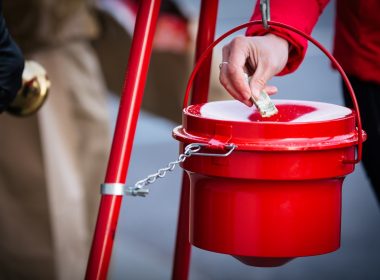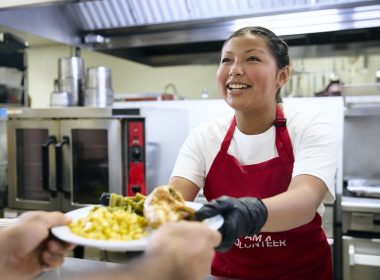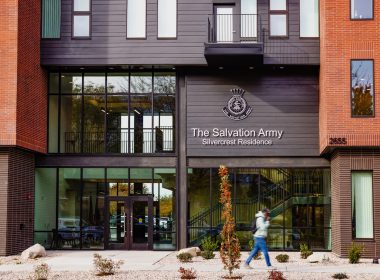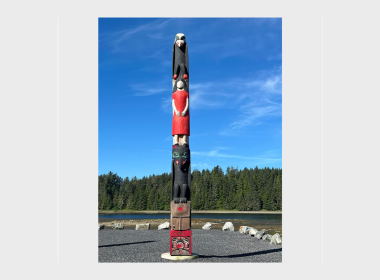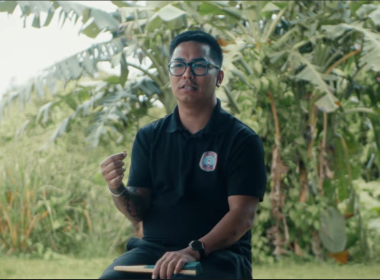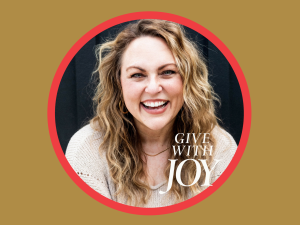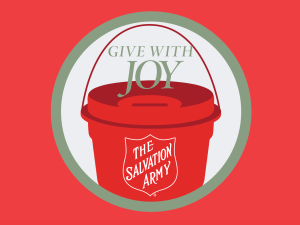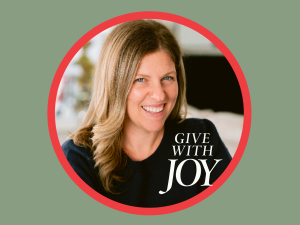Only those who’ve experienced grief can truly understand what it means to grieve.
For Donna Shea to understand, it meant the loss of her daughter to cancer.
Now as case manager at The Salvation Army emergency family shelter in San Antonio and previously as the Family Assistance Coordinator for The Salvation Army in Hemet, California, Donna leads support groups for grief and facilitates classes in the local elementary schools for children suffering from a loss.
She’s an ordained minister through Shalom Bible College.
And as she’ll tell you grief spins its web around you. A web of guilt, remorse, fear, anger and more—but a web that you don’t have to stay stuck in.
In her groups, Donna helps participants identify grief and shares tools for the grief journey.
She’s on the show to share more about her grief and her ministry to help others find a way out.
Show highlights include:
- Grief is a challenging process. What does it mean to be grieving?
- How grief shaped Donna’s story.
- About Donna’s book, “It’s Fine: A Mother’s View From the ICU”
- Why Donna now teaches others about grief.
- How grief has been magnified during the pandemic.
- Why addressing grief during this time is essential to those suffering from a loss.
- Simple ways parents trying to help their kids cope with grief during this time can help.
- Things to watch for that signal you might be experiencing grief.
- The best way to support someone who is grieving.
- What Donna would want someone going through grief today to know.
Listen and subscribe to the Do Gooders Podcast now. Below is a transcript of the episode, edited for readability. For more information on the people and ideas in the episode, see the links at the bottom of this post.
* * *
Christin Thieme: Well, Donna, thank you so much for being on the Do Gooders Podcast today, and welcome.
Donna Shea: Hi. Thank you for having me.
Christin Thieme: Grief is a challenging process, you could definitely say. What does it mean to you to be grieving?
Donna Shea: Oh, there’s so many different answers to that question. I have learned through my grief journey about grief. And I would say…today, I would call grieving remembering my part in the significant loss. When we grieve we remember how the loss affected us, and if we played a part in it, if we were there, if we weren’t there, if we did enough, if we didn’t do enough. Grief is really our own memories and our own actions wrapped around this passing of our loved one, and so we grieve the action probably more than being able to just process the death itself. We really just grieve the memories and our part either in it or not in it, because those are the things that will play in our head over and over. So to be grieving is to be thinking of how much we did, or how little we did, and if we really needed to change something, or if we could be at peace with our part in the passing of our loved one.
Christin Thieme: How has grief shaped your own story?
Donna Shea: Oh, I don’t know if I can say this without getting emotional. Of course in my lifetime, I have experienced the death of grandparents, uncles, family members and loved ones who were older than I, in the natural order of things, which we would call it. But my biggest grief in my life thus far is losing my daughter to cancer. She got diagnosed when she was 14, and she went home to be with the Lord at 20, so losing my first born to cancer.
I don’t like to say loss, even though it’s kind of the natural word that comes out of your mouth. I mean I know that she’s with Christ. So having my daughter die of cancer was a journey in itself, and in coming to the steps of peace and acceptance have been a phenomenal journey for me. It’s been seven years. It has been one of the biggest parts of my life that have shaped me to who I am today, and fortunately I can say that it has shaped me for the better, for the stronger, for the wiser. But not to say that those things came easily, quick, or even at my own will.
Christin Thieme: I’m so sorry. It’s just unimaginable to lose a child, and you’ve actually written your story in a book. Can you tell us more about your book?
Donna Shea: Yeah, when Terisa was in the hospital—Terisa was my daughter—her last three months of life were really the spiraling part of the cancer. On August 29th, it confirmed that her cancer had spread from just what we initially were diagnosed with the T-cell lymphoma to non-Hodgkin’s lymphoma at that point where it started just attacking all her organs. That was confirmed on August 29th. Terisa died on November 29th, and so it was literally a three-month wildfire spread, and it just attacked quick and fast. So I explained in my book to other moms that there just really was never a processing time. You can’t process what’s happening as you’re in it.
You go into mom mode, you go into control mode, you go into action, because you then become … And even though my daughter was an adult, she was still my daughter, you become their voice. You become their advocate. So after she was called home to be with the Lord, then that journey started to take place where I would write in my journal, where I would write conversations, where I would write her letters, and I really just started processing the grief. It took me a couple years to just really deal with my own feelings of anger, and frustration, and loneliness, and all the things that you feel when grief is just so prominent inside of you.
My corps officer [pastor] asked me to seek counseling around the anniversary of Terisa’s death, because that would seem to be a really hard time for me. So I did reach out to a chaplain at our closest ARC [Adult Rehabilitation Center]. Somebody who is very close to my husband and I. He walked me through some grief counseling that just changed my life, and he helped me to start to process that. But that was two, two and a half years, maybe three years after the passing. So I just started writing because that’s what he said, “Keep writing. Keep writing.” I had Facebook posts from Terisa’s last 26 days in the hospital, and I had written a lot about that.
That whole chapter of our life, we call it “The Hospital,” because we were just there for her last 26 days. I’ve written that story because I had to process it, because I had to grieve with it to be able to move forward and to grieve well. I needed to talk about that 26 days, because when you live in the ICU with your child it’s an experience like no other. There’s relationships that are built, there’s prayers that are said, there’s bonds that just grow really strong between nurses and family members. There’s just amazing experiences that are all God moments that people don’t get to share about, because it’s hovered over by this huge loss.
So when I talk about the hospital, I wanted moms to know what was going through my head. How did I process that comment? What did I do when a doctor told me this? Where were the moments where I had to really go and search for God so I knew what decision to make next? I wrote the book because I want other moms out there to know it’s okay to think what you’re thinking. It’s okay to be angry. It’s okay to yell and go have prayer time, and to do all those things because that’s how we function. And I just really wanted to focus on every moment that God showed up for us, and through us, and through others, while we were on that journey that did not end the way we wanted it to.
Christin Thieme: Absolutely. And that’s not the only way that you help people. You also lead groups of people, helping them through the grieving process as well. Can you tell us a little bit more about what you do now through The Salvation Army and why you teach others about grief?
Donna Shea: Sure. Funny enough, a lady came to me maybe a year after Terisa had died, and she brought me a GriefShare workbook. She was a senior who would come to our senior luncheons at the corps. She knew my story and she knew Terisa had died. She said, “Have you ever heard of this group?” and I said, “No, I really haven’t.” She’s like, “Well, I’m going to leave you my workbook, and I think it would be a really good thing for you to do here.” My husband and I already did the recovery ministry at the corps so I was very familiar with the recovery world. I had been in the recovery ministry forever facilitating groups and doing stuff of that kind, administering to people who were struggling in any kind of bondage was already very familiar to me.
So because I was running the Celebrate Recovery group at the time, she thought it would be a good addition to add some grief groups into there. So I took the workbook and I looked through it, and I prayed over it, and I just kind of set it to the side because I just didn’t think I was ready. Time passed, like a significant amount of time passed, and actually had the change of officers. Then it started to become more and more strong in my heart and in my spirit to maybe dig back into this. So I read through the GriefShare book, and after I went to that initial one-on-one grief counseling with the chaplain at the ARC, and I started to really feel my spirit heal a little bit more. I asked my corps officers if they thought it would be a good idea if we did this group.
They were, of course, 100 percent onboard, so we ordered the package, and we signed up for GriefShare. I just immersed myself in the teaching, and started our first GriefShare group, and it was just amazing. I think I’ve taught maybe eight rounds of GriefShare since then. The tools that are taught in that class are just so helpful to open your eyes to what grief looks like. Unless you really sit down and dissect the cobwebs of what grief is, you just think it’s this brick that just stays in your gut forever that you have to keep. And that’s just not the truth. Yes, grief is a web. My husband, he likes to fish, and he had this knot of fishing line off of one of his fishing poles that he was relining. And I was like, “Let me take that,” and so I took it to my grief class.
I put it on the table: “This is our grief, and every single strand has to be undone, and that can only be done by the work of the Holy Spirit. And every strand has a name, loneliness, fear, anger, depression, despair, relief. Every strand has a name, and grief is all of that.” So unless you’re actually teaching somebody what grief looks like, that it’s completely normal to be all over the place, that you’re going to feel every single one of those emotions, and it’s okay, and that with the help of the Holy Spirit you can completely untangle that web so it’s manageable, and you can function, and you don’t have to live with that brick inside your gut. It’s going to be alright.”
So that’s my heart. I don’t want people to be stuck in their grief. I don’t want people to think they have to stop living because the person they love most in the world has stopped living on this Earth. You know, we have a first breath, we have a last breath, and we’re accountable to Jesus what we do with that time. So I love teaching grief because I love teaching what the face of grief looks like, and how we can process it, how we can untangle it, how we can leave it at the foot of the cross, and how we can still live in our purpose that Christ gave us with the hope of being reunited one day.
Christin Thieme: It’s a powerful visual. And these classes, like everything else that we’re experiencing, you’ve moved on Zoom.
Donna Shea: Yes.
Christin Thieme: So how has the pandemic influenced how you lead these groups and even the grief process itself? And why is it essential do you think that these groups continue for those who are experiencing loss right now?
Donna Shea: So when everything went virtual in March 2020, we really just strived to keep the group alive and the group open and the group available. And it was very strong in the beginning, because people were adjusting to a whole new level of grief. COVID always adds a whole new layer of struggle to this life right now. Grief became different looking. It became grieving freedom, grieving the loss of visiting family members, grieving the loss of fellowship, grieving the loss of church, grieving the loss of going on trips, and being able to travel, and fear added on top of that, and people being isolated. It was just a whole new struggle of the unknown. So grieving classes, grieving groups were super important and they lasted a long time and were very helpful and it gave people a time to talk about the unknown and their fears. And unfortunately, a lot of our people who had been attending these groups previously were now seeing other deaths and other grieving matters. And so that was doubly hard.
I had people in the group who lost elderly parents and couldn’t be there for their death and couldn’t visit them in the hospital. And that just adds a whole ‘nother heartache to it. So it was just my part to provide a safe place and an open place for everybody to voice these things and to bring prayer into the matter and to let them know God was still here and God was listening and He was going to get us through this time. I also was, pre-COVID, going into the elementary schools once a week and facilitating grief groups with the children in our schools. That changed very quickly and one of the hardest parts of that was I had started a very fresh group at an elementary school the second week of March. And then I was called and told not to come back because of the situation. And I had just met a new group of six children who had just suffered immediate losses in their family. And I was never able to see them again.
And that was heartbreaking because these children who need to know what grief looks like, need to know it’s okay, the struggles that they’re facing, then COVID hit. And then eventually all the kids were sent home to deal with a whole new school situation. And they were already struggling immediate losses in their families. Some parents, some grandparents, some siblings. So, that was heartbreaking in itself. When school started back up, we attempted to start the program virtually, but with the way classes were and how hard it was just to get kids to bring in their own virtual learning situation. The grief counseling part of it just did not succeed this school year.
It just couldn’t with the way things were set up. So it was really, it was a non-existent thing. And that, that’s just heavy. That’s heavy that these kids were not able to receive any grief counseling through this virtual learning set up. So my prayer is that for the new school year, coming back in the fall, that the program will be able to start back up again. And I know there will be a lot of children who will need to work out their grief and talk about what grief looks like. And it’s just essential that they get the help they need. COVID has just put such a layer on grief from young to adult, and we just have to do whatever we can to make help available and to be open and to be ready and to have places where people can log on and just talk about it.
Christin Thieme: Having worked with kids, for parents who maybe are trying to help their kids cope with grief during this COVID era, what are some simple ways that they can help?
Donna Shea: I love the children’s program because it’s really interactive. Kids are so resilient and they’re so open when you get about four to six kids in the room around a table and they feel safe and they feel like it’s okay to talk—so much good stuff happens. They’ll make the whole situation better just by being themselves, if that makes any sense, and the program is so beneficial to them because it’s interactive. And we get to do things like yell and scream and jump up and down and hide under the table. And my favorite activity is when we go to Moody Range, because we get to visit these places. And we get to go to Scared Valley and we get to hide under the table. And we each talk about what it looks like to be scared.
And then we get to go to Angry Canyon where we turn around and we scream at the top of the lungs. The first thing that we think about when we think about the death. And so I always start, and I always screamed: “I didn’t have enough time.” And then the child next to you will scream and you just go in a circle and we’re pretending like we’re at the Grand Canyon and it’s just echoing.
And everybody feels like their feelings are valid because we’re listening and we’re letting it out. And they’re so great. And then we do scared. We do angry. We do happy. And it’s real interactive. We use our chairs, we go under the table, we stand on top of the table and we turn around and yell. And the time you’re done with that activity, they’re just so relieved and just like, wow, I never thought I could release that. And they’re amazing. It’s amazing. That’s my favorite part of it with kids—these kids are not afraid to let it out.
Christin Thieme: Having the space to do that is so important and..
Donna Shea: It’s super important.
Christin Thieme: …in the class, you help people identify what grief looks like. So for people listening, what are some things to watch for that signal that maybe you yourself are experiencing grief.
Donna Shea: So first of all, and they talk about this in my book is my initial feeling of grief was just outrage, but inside. So I don’t know if you would call it enraged, but I was just raging, just raging angry quietly on the inside because I just, I couldn’t even imagine how I could let it out. There’s just no way. There are no words. There were no tears. My daughter died. And in my book, I talk about that. That was the week that played in my head for months, I would go to work. I would go to church. I would go to functions. And in my head, all I could hear was my own voice. Just saying, my daughter died, my daughter died, my daughter died and I could be talking and I could be functioning. I could be doing what, counting kettles. Like I was counting kettles a month after Teresa died. And everybody would be around the kettle table and, and doing [Salvation] Army visits. And in my head, my daughter died, my daughter died and it just, those were my thoughts.
And that, that was hard. So my initial, what grief looks like was just dealing with that rage. You’re going to feel rage and you’re going to—you’re going to be angry at people because they don’t know what to say. They don’t know what to do. They don’t know how to act. So there’s nothing that anybody is going to do that’s going to be right for you. And I remember going through that and I remember going home and just falling on my floor, putting worship music on and asking God why nobody was getting me.
I wasn’t short of people who loved me. I wasn’t short of a support system. I wasn’t lacking family members. It was my own mother’s heart. And it was explained to me later that nobody could, nobody but the Lord was going to get it because nobody but the Lord was in that with me, in that moment, in those things. And so what grief is like is just a flood of emotions that you can never pick apart one by one, because sometimes they’re just too much. And sometimes they’re absent. Sometimes you’re numb, sometimes you’re angry. Sometimes you’re guilty. Sometimes you’re ashamed and sometimes you’re relieved. And all of that is okay. All of it, as long as you know that you can trust Jesus to help you out of it.
Christin Thieme: So there is no way to understand, obviously, but what is the best way to support someone who is grieving?
Donna Shea: Such a good question, right? Because it’s going to be different for everybody. I just say be available. You know, some people will want to go out to lunch. Some people will want to stay home. Some people will want to surround themselves with friends. Some people will just want to watch TV. My best advice is just not to put expectations on somebody who’s just suffered this loss, but just be available. And some people say they hate hearing how strong they are. And some people say, nobody thinks I’m strong enough. You can’t pinpoint what somebody’s grief is going to look like. And all of our grief, I believe, has been taught to us through how we have maybe watched someone else grieve in our life. So working with children and bereavement, they not only have their own grief to deal with, but they’re also carrying the layer of grief that their family members, parents or caretakers are putting on them.
So if you imagine a household situation and you’re a child, who’s maybe eight years old and the father of the house has just died and you see your mom. And however she’s managing that grief, you’re going to take that also upon you. And you’re going to carry your mom’s grief because you see her grieving and that’s going to be layered upon your own. What is happening? Where’s my dad? Was it my fault? Why did this happen? Could it have been different? Where it’s like, where is he? All of it. Like all those questions a child might have. And then you have the grief of the family members. That’s just inadvertently weighed upon you. Children have almost double or triple the web to work through because they’re carrying others, very huge grief and parents don’t do it on purpose. And they probably don’t even realize they do it. But when you’re hurting, sometimes you can’t help but let those feelings and outreaches out and the children pick that stuff up.
So somebody who’s trying to help somebody who’s facing a devastating loss, just be available.
Christin Thieme: So heavy, but that’s—what more can we do then just be there for somebody.
Donna Shea: Right.
Christin Thieme: What about on the flip side of that? Here is my last question: What’s one thing that you would want someone who is grieving right now, maybe listening to this, to know today?
Donna Shea: That you don’t have to stay stuck. You don’t have to carry it. If you feel like it’s your fault, if you feel like you should have done more, if you feel like that person’s memory will disappear if you move forward—you don’t have to. You never have to lose that person because they’re alive in you. Their memories are alive in you. And they would want you to move forward. Especially mothers; mothers carry this. The sense of I’m this child’s mother, so that’s my purpose. My purpose was to be a mother to this child. And without this child, I have no purpose, and that’s not true. Our purpose is in Christ.
One very hard lesson I had to learn. It still hurts me to say it, but I will say this. This will be my advice: God will never take away anything essential for our life. The only thing essential for us to live is Christ. Our children, as much as we believe they are essential for our everyday living, are not because they belong to the Lord first. He gave them to us to do our best with them. When he decides time for them to come back, then that’s God’s decision and he will never take away anything that was essential for us to live because he will never take away his son from our lives.
Christin Thieme: Well, Donna, thank you so much for sharing today, for telling us about your story, and thank you so much for the work that you’re doing to help people who are hurting.
Donna Shea: Thank you. And can I just blast the name of my book? In case anyone wants to read it.
Christin Thieme: I was just about to do that. Please look up Donna’s book. It’s called “It’s Fine: A Mother’s View From the ICU.” We will also link to it in our show notes so that you can find it directly there as well. So Donna, thank you so much. I hope people pick it up and can find help through your words.
Donna Shea: Thank you. Thank you for having me. It’s been an honor. I appreciate it.
Additional resources:
- Read “It’s Fine: A Mother’s View From the ICU” (2020) by Donna Shea.
- Watch Donna tell her story in this video, “Comfort in Grief: Losing a Loved One.”
- Get inside the Caring Magazine Scripture Study Collection and find a suite of free, downloadable Bible studies to guide you through topics from New Beginnings Through Forgiveness, to Understanding our Imago Dei or Life Hacks From David.
- It’s because of people like you that The Salvation Army can serve more than 31 million Americans in need each year. (That’s almost one person every second, every day.) Your gift helps The Salvation Army fight for good all year in your community. It’s an effort to build well-being for all of us, so together we rise. And that good starts with you. Give to spread hope with a donation of funds, goods or time today.
Listen and subscribe to the Do Gooders Podcast now.

